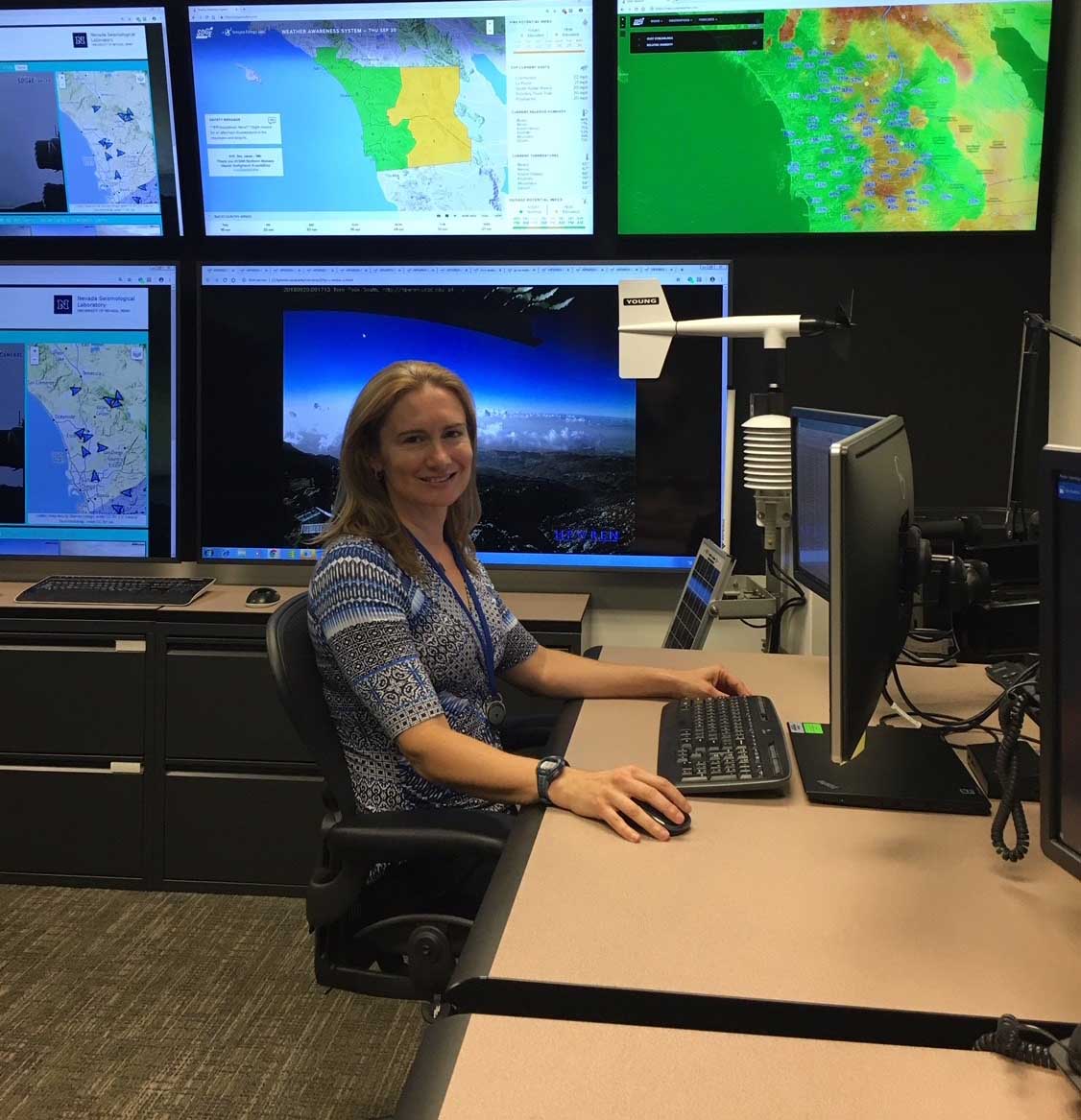In Southern California, rising temperatures, prolonged drought conditions, and severe weather patterns present us with an on-going challenge – the increased potential for devastating wildfires. To combat this threat and protect our communities, we’ve established a new Fire Science and Climate Adaption Department. One of the newest team members of the department is meteorologist Carrie Bowers whose specialty is fire science. Carrie was a wildland firefighter for nine years prior to becoming a meteorologist.
SDG&E’s Fire Science and Climate Adaption Department is the result of a decade of continuous improvement and intense focus on fire mitigation. The resources and tools we use to monitor weather conditions and protect our region are widely held up as the best in its class.
Recently we had a conversation with Carrie about how her firefighting experience, coupled with her meteorology knowledge (she is completing her master’s in meteorology at San Jose State University) helps us navigate the “new normal” – year-round wildfire risks. Here is an excerpt from the conversation:
What does it mean to be a fire science meteorologist? How is it different from being just a meteorologist?
My background in fire and my degree (in progress) in meteorology gives me a better understanding of the weather patterns that lead to high fire danger, and how the fire and surrounding atmosphere interact. I’ve been on many fires, from very small to very large, and I’ve seen firsthand how fire responds to changing weather. Part of my job is to study past fires in our region and the weather patterns that dictated their behavior, to help SDG&E keep the community safe and mitigate risks to our infrastructure.
You were a hotshot before you decided to become a meteorologist. What was it like being a female firefighter?
Being a female firefighter was probably a lot like being a male firefighter. Being a hotshot is a demanding job, regardless of who you are. The work is physically grueling, dirty and hot, and can keep you away from home for weeks at a time. Because of these things, there’s a great sense of pride in being a hotshot, and the job can certainly be exciting at times. The crew became a lot like family, as suffering together can make for a strong bonding experience.
Can you talk about how your experience as a firefighter informs what you do on a day to day basis as fire science meteorologist?
Working as a wildland firefighter for nine years developed in me an innate feel for the change in seasons and what that means for fire potential. When the fire potential is elevated, I’m particularly cautious with the weather briefing and how I communicate that out to the company.
Who or what inspired you to pursue a career in science?
I’ve always loved science, and I think I get that from my dad. He was always curious about how the universe works, and we’d have fascinating discussions about the articles we read in the latest Discover Magazine. Working in fire, we had to have a basic understanding of weather since it’s a big part of how the fire is going to behave. After nine years in fire, I started to feel like it was time to move on. During a weather class for firefighters, I realized how fascinated I’ve always been with how the atmosphere works and decided to pursue a degree in meteorology.


